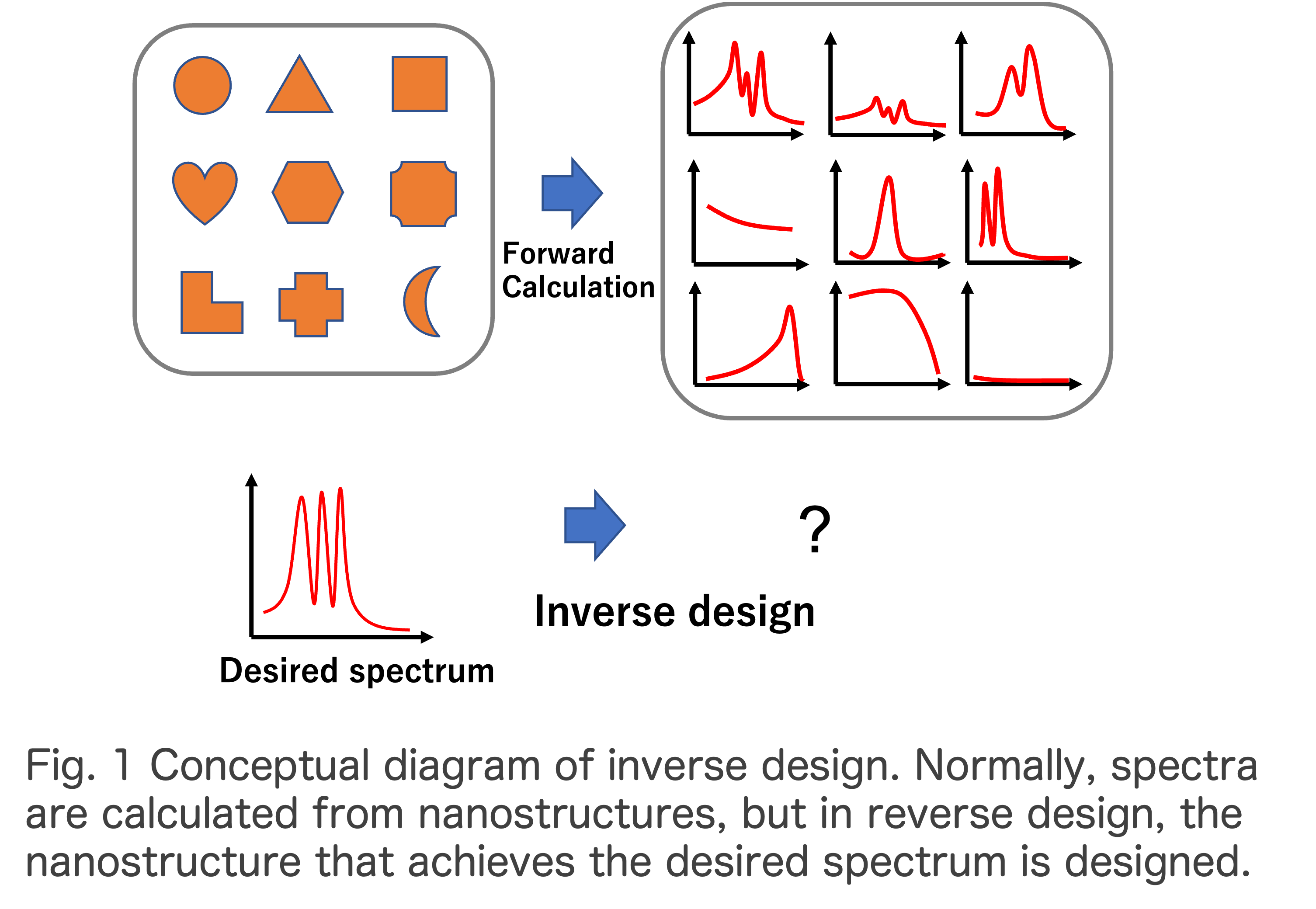Optical design by machine learning
Recent computer advances have made it possible to process calculations at high speed. However, inverse design to achieve desired optical properties (Fig. 1) requires much computation. We are conducting research to solve this problem by introducing machine learning.
Neural networks are a method of creating a data structure that software mimics a neural network. When trained on results derived from training data, a neural network can estimate results extremely quickly. In the optical calculations of the complex structures we study, having the neural network learn upon learning has resulted in thousands of faster results. We used this to perform an inverse design and successfully designed a cloaking medium. Cloaking is a technique to make matter invisible.
Neural networks require training data to be prepared in advance, which can be time-consuming. We have also designed a cloaking medium using a genetic algorithm that searches for the optimal structure without training data. While previously proposed structures had a narrow wavelength range for cloaking, we have designed cloaking structures over the entire visible light range.

Return to Research

